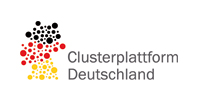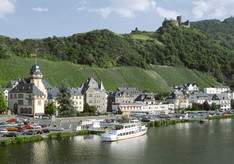Rhineland-Palatinate
The bundling of knowledge and competencies through thematic and regional networks and clusters is of particular importance for the innovative strength of the state. For this reason, their initiation, monitoring and support are elementary components of Rhineland-Palatinate's innovation policy. The focus is on small and medium-sized enterprises and their role in promising value-added structures.
Rhineland-Palatinate supports a number of technology-oriented networks, clusters and hubs. These can be assigned to the six potential areas of Rhineland-Palatinate's innovation strategy, which reflect the strengths and potential of business and science for innovation policy.
Materials, materials and surface technology
- Plastics Technology Competence Network (Kom-K-Tec)
- Carbon Composites - Regional Department West (CC West)
Life sciences, health industry
- Leading-edge cluster Ci3 - Cluster for Individualized
- Immune Intervention
- Rheumatism VOR
- Digital Hub Rhine-Neckar
Microsystems technology, sensor technology, automation
- Innovation Platform Magnetic Microsystems (INNOMAG)
- Technology Initiative SmartFactoryKL
- Optence
Automotive and commercial vehicle industry
- Commercial Vehicle Alliance (CVA): consisting of Commercial Vehicle Cluster - Nutzfahrzeug GmbH (CVC), Fraunhofer Transfer Center Digital Commercial Vehicle Technology DNT, Center for Commercial Vehicle Technology (ZNT)
- FI-RLP - Vehicle Initiative Rhineland-Palatinate
Information and communication technology, software systems
- Spitzencluster/Software-Cluster - Software innovations for the digital enterprise
- Digital Transformation Hub (DT:HUB)
- Gutenberg Digital Hub (GDH)
Energy, environmental technology, resource efficiency
- StoREgio - Application of intelligent stationary energy storage systems
- Ecoliance Rhineland-Palatinate
In addition to these value-added-oriented networks, regional knowledge and innovation alliances exist in Kaiserslautern, Koblenz, Mainz and Trier. With these, the initiatives and measures achieved so far will be even more closely interlinked regionally and future potential for the region will be identified and exploited at an earlier stage.
(last update: February 2022)
More information
- Recommend this page:
- Print view

